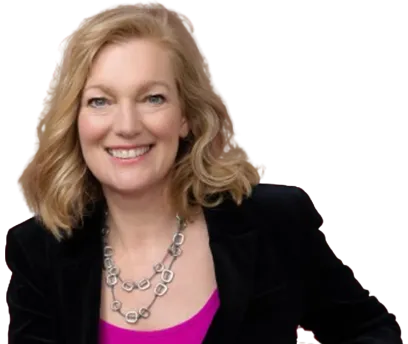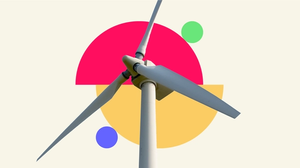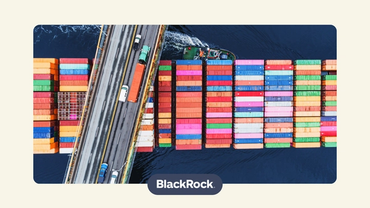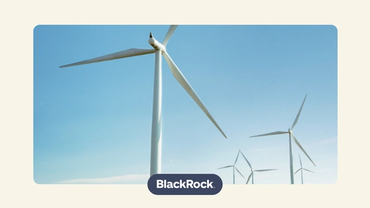Sustainable investing: Holly interviews M&G
24 Feb, 2022
Holly interviews Maria Municchi, Manager of M&G’s Multi-Asset Sustainable range. Holly wanted to get a better understanding of how investors – the average Jo – can start to look for funds which map to their criteria. And what are some of the key things we can look for in making our selection?
It’s a Multi-Asset Fund. What’s that?
In my simplified terms, this fund range of 3 different funds represents a broad church of investments from around the world, which are blended together in different ratios, depending on how much volatility (ups and downs in value) you are prepared to weather in search of hopefully better returns.
You pick one thing which under the bonnet has literally 1000s of investments in it – which someone else manages for you. It’s an investment ready-meal.
This fund range has three variants from gentle to more hardcore. The one which may fluctuate the most – the Growth variant - is defined by volatility. The fund’s aim is to avoid going up or down by more than 17% in any one year. These are not targets but something to avoid. It just helps manage expectations and gives investors a flavour of what the journey may feel like.
Currently, about 70% of the funds is in shares and corporate bonds – and about 30% in typically calmer bonds (or IOUs to Governments which pay interest to investors). The mix of ingredients depends on your ‘risk profile’.
Tip: Work out your ‘risk tolerance’. If you need some help, all of the main robo advisers out there have risk questionnaires you can try, which will translate your attitude and tolerances into a ‘risk profile’.
What goes in the multi-asset sustainable fund?
Once the team has worked out the blend of shares versus bonds, then they need to figure out what investments to pick. Aside from purely financial metrics, what else is considered in sustainable funds??
Firstly they take the whole great big world of available investments and apply some ‘sustainability’ filters. So this fund excludes controversial weapons, thermal coal, alcohol, tobacco, adult entertainment and gambling. The ‘nasties’. Those funds which simply exclude ‘nasties’ are normally called Ethical funds by the industry.
Sustainable funds go a step further. In addition, Maria looks at so-called ESG (Environmental , Social, Governance) ratings from an independent data provider called MSCI. This data provider gives every company and government a rating out of 10 which is used in stock selection to discern between the issuers, whether companies or governments, with the best and worst sustainability profile..
And the fund also has a strong focus on climate change.
Tip: See if your fund has any external independent sustainability ratings. Morningstar and MSCI are well-known providers of this service. Maria’s fund is subject to an MSCI ESG score – everything which is rated gets a collective 8 out of 10. Morningstar is another credible provider of these ratings.
How can I do a basic check on the environmental footprint of my investments?
The most consistent way we can look at an investment’s green creds is to consider what is known as ‘weighted carbon intensity’ – or how much CO2 is spewed out for every $1 million a company makes. This arguably enables comparison between bigger companies and smaller companies – not penalising massive firms which inevitably produce more.
As with most things, this approach is not perfect. First up, it’s only measured for companies and corporate bonds. If you have bonds from the German government for example, you can’t get a grade here. So you’re only measuring a proportion of your portfolio.
And secondly, if you have a company which charges a hoofing great big margin on its luxury items – I’m going to pick Burberry as an example – then it could have a whopping amount of emissions which look smaller by the time you have divided them by huge revenues for over-priced macs. Nonetheless it’s a start.
All funds will have a benchmark against which consumers can compare their relative performance. This average collection of investments can also be used to compare how ‘clean and green’ a fund is in terms of carbon emissions. The benchmark is not a perfect comparison but it’s a pretty good starting point, for those of us who aren’t professors. Do understand the benchmark a fund is using to compare itself against, and use your common sense on whether this is sensible – or are they comparing themselves against something relatively uncharming in order to cite beauty?
Tip: It’s all relative. So you know what good looks like. The average CO2 emissions for a big and broad collection of the world’s largest shares (MSCI World Index) is about 152 tons per $1 million of revenue. Maria’s fund is made up of a collection of investments which average 91 tons, for example.
Am I investing in an Impact fund, or a Sustainable fund?
This is an important difference. Basically, impact funds have a much smaller pool of investments to choose from and have to be able to evidence and quantify impact. You can’t just mumble about saving the planet. You have to show the impact that your investments had.
This is much more interesting to many people but actually harder to do, and can be a bumpier, less-certain ride too. It’s not so easy to invest in a wind farm for example. We can’t just buy a blade of the windmill – and this stuff is also ‘illiquid’ which can make it pretty unsuitable for us retail investors who want to be able to sell our investments and get out money out in a matter of days. There are structures to make it accessible but it’s just a bit more complex.
Maria’s fund is a mix of the impact and sustainable approach. Between 20% and 60% of her funds are in impact investments, and the remaining 80% to 40% in sustainable investments. For the impact investments, this is not about filtering things out. It’s about starting with a blank piece of paper and pro-actively seeking investments which are good investments, have intent and can be measured. Managers will often align these to some of the UN’s Sustainable Development Goals.
So, for example, Maria has 6 key themes which represent SDG’s (Sustainable Development Goals) she works to – Climate Action is one. Health and Wellbeing another.
The measuring of impact is really interesting. It’s annoying for someone like me who likes things to be reduced down to their most simple. I’m after a ‘food label’ equivalent for a fund. Something consistent across everyone which tells me what is what. But when Maria gives me examples such as measuring the number of students reached by an educational service in Brazil, or tracking the number of blood donations supported, you start to see how these metrics are by necessity inconsistent. Because it depends on what you have.
Tip: If investing sustainably, look at what SDGs the fund is aligned to. Do these map to your concerns? If you want to go a step further and invest in Impact stuff, then you will really need to read up more on what is in the fund, because there won’t be any single metric which can sensibly apply across the board. Here, we will really need to read the impact on an investment-by-investment basis.







